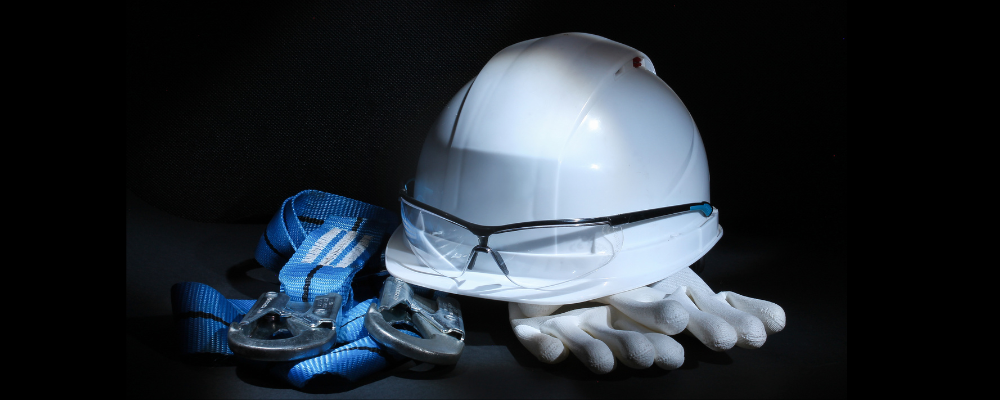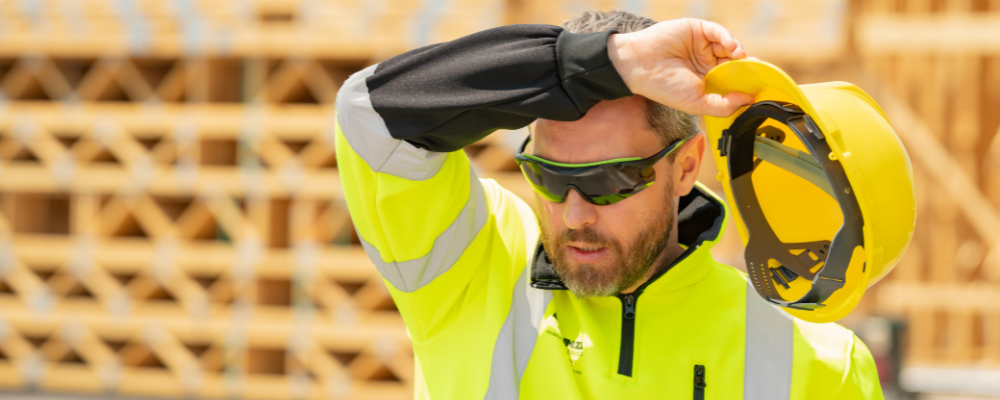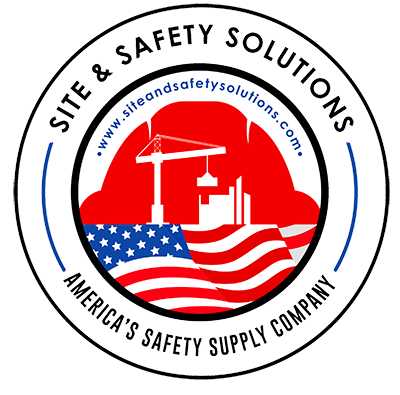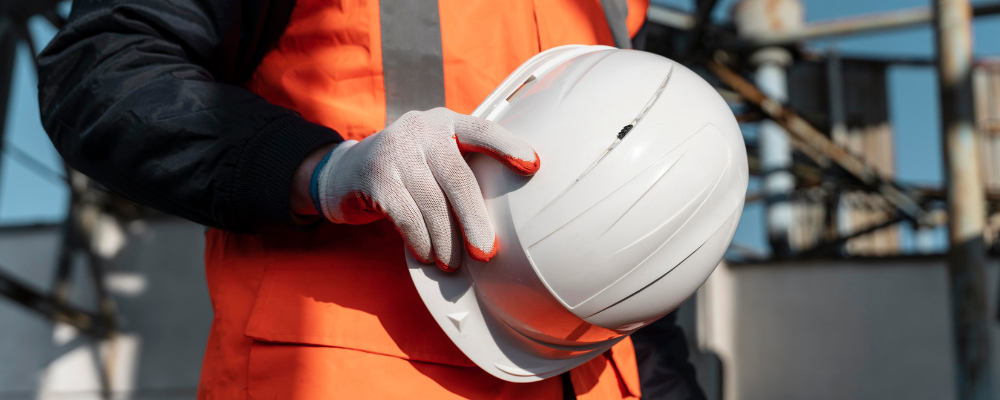
Introduction
In the construction industry, workers face diverse and often hazardous risks daily. The dangers are multifaceted, from the threat of falling debris to potential exposure to electrical hazards. Additionally, head injuries resulting from slips, trips, and falls are common occurrences, underscoring the critical need for robust head protection. Understanding these risks is paramount to implementing adequate safety measures that safeguard construction workers on-site.
Choosing the Right Head Protection
Selecting suitable headgear is pivotal for ensuring the safety of construction workers across various tasks. The diverse array of products caters to specific needs, offering features and benefits tailored to different job scenarios.
Product Showcase
-
Briggs Short Brim – Non-Vented
This headgear boasts essential features such as a short brim design for unrestricted vision and non-vented construction for protection against various site hazards. Crafted with durable materials, it ensures robust protection for construction workers while enhancing comfort during extended wear.
-
DAX Fifty 50 Carbon Fiber Cap
Designed for durability, the DAX Fifty 50 Carbon Fiber Cap is engineered to withstand demanding construction environments. Its carbon fiber construction ensures lightweight yet robust protection, making it an ideal choice for resilient and comfortable scenarios.
-
DAX JUNGLE CARBON FIBER FULL BRIM HARDHAT
This unique hardhat offers full brim coverage and incorporates carbon fiber for enhanced durability. Its design caters to specific situations where a broader shield against overhead elements or extensive protection is necessary, ensuring safety without compromising comfort.
-
MSA V-Gard® Slotted Hard Hat w/ Staz-On® Suspensions
This hard hat stands out due to its thoughtfully engineered design, providing reliability and comfort. The slotted construction facilitates accessory attachment, while the Staz-On® Suspensions ensure a secure and comfortable fit, making it a dependable choice for construction workers seeking adaptability and ease of use.
-
DAX Hard Hat Replacement Suspension
Maintenance is crucial for ensuring the ongoing effectiveness of headgear. Replacement parts, such as this suspension system, play a vital role in maintaining the integrity of the headgear. By promptly replacing worn-out components, construction workers can uphold their protective equipment’s safety standards and durability.
Compliance and Regulations
The longevity and effectiveness of head protection gear rely heavily on proper maintenance. Regular inspections, cleaning, and appropriate storage are imperative to preserve the integrity of the equipment. Construction workers should follow guidelines and tips meticulously to ensure continued safety.
Understanding and adhering to legal requirements and standards regarding head protection in construction sites is non-negotiable. Compliance with these regulations is the joint responsibility of both employers and employees, emphasizing the significance of a collective commitment to safety in the workplace.

Maintaining Safety Standards: Head Protection Inspection and Care
- Introduction:
In the high-risk environment of construction sites, safeguarding workers’ well-being is a paramount concern. Regular inspection and maintenance of head protection gear are indispensable in ensuring the safety of construction workers. By implementing proper inspection, cleaning, and storage protocols, the longevity and effectiveness of headgear can be upheld, minimizing the risks associated with potential equipment failures.
Inspection Guidelines:
Construction workers should conduct routine inspections of their headgear to identify any signs of wear, damage, or deterioration. A comprehensive inspection involves:
- Visual Assessment: Examine the outer shell for cracks, dents, or deformities that might compromise its integrity.
- Suspension System Inspection: Check the suspension system for signs of fraying, stretching, or any damage that might affect its functionality.
- Adjustment and Fitting: Ensure that the headgear fits securely and that adjustments are made for a snug and comfortable fit.
Signs such as cracks, deformities, significant wear and tear in the outer shell, suspension system issues, or an improper fit indicate the need for replacement to maintain optimal safety standards.
Proper Cleaning Techniques:
Maintaining cleanliness is vital to ensure the effectiveness and longevity of head protection equipment. Proper cleaning techniques involve:
- Material-Specific Cleaning: Provide step-by-step instructions for cleaning different headgear materials, whether plastic, fiberglass, or carbon fiber.
- Use of Suitable Cleaning Agents: Emphasize the importance of using appropriate cleaning agents to avoid damage to the material. For instance, mild soap and water may suffice for some materials, while others might require specific cleaners.
- Methodical Cleaning Process: Describe a systematic cleaning process, including rinsing, gentle scrubbing, and air-drying to maintain the integrity of the equipment.
Storage Protocols:
Proper storage significantly contributes to prolonging the lifespan of head protection gear:
- Designated Storage Areas: Encourage workers to store their headgear in designated areas away from extreme temperatures, direct sunlight, moisture, or chemicals.
- Protection from Contaminants: Advice on protecting headgear from contact with chemicals or substances that might degrade the materials.
- Storing Suspensions: Emphasize the need to detach suspensions and keep them separately to prevent damage or distortion.
In summary, regular inspections, proper cleaning, and adequate storage are integral components of maintaining safety standards for head protection in construction. These practices ensure the gear’s continued effectiveness and play a pivotal role in safeguarding the well-being of construction workers. By adhering to these protocols, construction sites can mitigate risks and create a safer work environment.
The Evolution of Head Protection in Construction: From Past to Present
The historical evolution of head protection in the construction industry unveils a profound journey rooted in the necessity to safeguard workers. Since antiquity, humans recognized the vulnerability of the head to injury, leading to the development of rudimentary protective gear. This historical context serves as a foundation for understanding the transformation of head protection across centuries.
Historical Overview:
-
Earliest Forms of Head Protection:
In ancient civilizations, workers used primitive head coverings made from leather, cloth, or vegetation. These early forms of headgear aimed to shield against falling debris and impacts but lacked adequate structural integrity and protection against various hazards.
-
Milestones and Limitations:
Throughout history, head protection has witnessed incremental improvements. The industrial revolution introduced metal helmets, enhancing durability and impact resistance. However, these early models were heavy, uncomfortable, and often insufficient in addressing workers’ specific dangers.
Technological Innovations:
-
Recent Advancements:
The 20th and 21st centuries witnessed remarkable strides in head protection technology. The introduction of materials like fiberglass, carbon fiber, and advanced polymers revolutionized construction headgear. These materials offer superior strength-to-weight ratios, making head protection lighter without compromising safety.
-
Addressing Safety Concerns:
Modern headgear integrates design improvements such as suspension systems, shock absorption, and adjustable fits. These innovations cater to specific hazards in construction, providing better protection against falls, impacts, electrical hazards, and even extreme weather conditions.
Future Trends:
Potential Advancements:
Future head protection might involve innovative technologies, integrating sensors for hazard detection or communication systems for better worker coordination. Nanotechnology might lead to ultra-light yet incredibly strong materials, further enhancing comfort and safety.
Enhanced Safety:
Anticipated advancements could offer real-time risk assessment, immediate response mechanisms, and personalized protective gear, significantly reducing head injuries and ensuring more tailored protection for individual workers.
The evolution of head protection in construction reflects a profound commitment to worker safety. From humble beginnings of basic coverings to today’s cutting-edge technologies, the journey has been one of constant improvement and innovation. Looking forward, the trajectory points toward a future where head protection becomes not just a shield but a comprehensive safety system tailored to individual needs, ultimately ensuring the utmost safety for construction workers.
Compliance and Best Practices: Head Protection Regulations in Construction
In the dynamic landscape of construction, ensuring the safety of workers stands as a paramount concern. Head protection regulations are a cornerstone in safeguarding workers from potential hazards. This overview delves into the construction domain’s legal obligations and standards for head protection.
-
Regulatory Standards:
Regulatory bodies, such as OSHA (Occupational Safety and Health Administration) in the United States or similar entities globally, have outlined stringent guidelines for head protection. These regulations stipulate the design, quality, and usage standards of protective headgear. Emphasis on compliance is not just an administrative formality; it’s a fundamental aspect to mitigate risks and protect workers from severe head injuries.
-
Employer Responsibilities:
Employers bear a significant responsibility in ensuring workplace safety, including providing and enforcing proper headgear. They are tasked with sourcing approved head protection that meets industry standards, supplying it to employees, and ensuring its regular inspection and replacement if damaged. Beyond mere compliance, fostering a culture of safety is pivotal. Employers must prioritize training programs, encourage proactive reporting of issues, and lead by example to cultivate a workplace environment where safety is ingrained in every operation.
-
Employee Obligations:
For a robust safety framework, employee involvement is equally vital. Construction workers must adhere to safety guidelines, including consistently and correctly utilizing provided head protection. Education and training initiatives play a pivotal role here. Employees should be well-versed in identifying risks, understanding the importance of headgear, and participating actively in safety protocols. This demands ongoing training sessions, periodic safety briefings, and a collective commitment to maintaining a safe work environment.
Essentially, the onus of ensuring head protection compliance and safety doesn’t solely rest on one party. Both employers and employees play indispensable roles. The collective responsibility involves adherence to regulations, proactive measures to mitigate risks, and fostering a culture where safety isn’t just a requirement but a shared value. Through collaborative efforts, construction sites can become safer environments, minimizing the risk of severe head injuries and ensuring the workforce’s well-being.
For more information, visit our website and Facebook page.
And for more products,
DAX Hard Hat Replacement Suspension
MSA V-Gard® Slotted Hard Hat w/ Staz-On® Suspensions
DAX JUNGLE CARBON FIBER FULL BRIM HARDHAT
Briggs Short Brim – Non Vented
Conclusion
In conclusion, the paramount significance of head protection in the construction industry cannot be overstated. Throughout this discourse, we’ve delved into the daily risks construction workers face and underscored the pivotal role that appropriate headgear plays in mitigating these hazards.
By exploring a range of cutting-edge head protection solutions like Briggs Short Brim – Non-Vented, DAX Fifty 50 Carbon Fiber Cap, DAX JUNGLE CARBON FIBER FULL BRIM HARDHAT, MSA V-Gard® Slotted Hard Hat w/ Staz-On® Suspensions, and DAX Hard Hat Replacement Suspension, we’ve showcased the diversity and efficacy of options available to safeguard against potential injuries.
Ensuring comprehensive coverage, we’ve provided insights into inspection protocols, proper maintenance techniques, and compliance with regulatory standards, advocating for a holistic approach to construction head protection.










